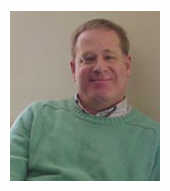Donnerstag, 06. Juni 2013, 18:00 - 19:30 iCal
FREUDIAN AND JUNGIAN APPROACHES TO HERO MYTHS
Prof. Robert Segal, University of Aberdeen
Dekanatssitzungssaal der Katholisch Theologischen Fakultät
Universitätsring 1, 1010 Wien
Lecture
Prof. Segal, Sixth Century Chair in Religious Studies, University of Aberdeen, specializes in theories of myth, religion, and Gnosticism. He is the author of Myth: A Very Short Introduction, The Poimandres as Myth, Religion and the Social Sciences, Explaining and Interpreting Religion, Joseph Campbell, and Theorizing about Myth. He is the editor of The Gnostic Jung, The Allure of Gnosticism, The Myth and Ritual Theory, and Hero Myth Reader.
In his lecture Prof. Segal will use Otto Rank's THE MYTH OF THE BIRTH OF THE HERO (1909) and Joseph Campbell's THE HERO WITH A THOUSAND FACES (1949) to illustrate the difference between a Freudian and a Jungian approach to hero myths and to myths generally. Where for Freud and Rank heroism is limited to the first half of life, for Jung it involves the second half even more. For Freud and Rank, heroism involves relations with parents and instincts. For Jung, heroism in even the first half involves, in addition, relations with the unconscious. Heroism here means separation not only from parents and anti-social instincts but even more from the unconscious: every child's managing to forge consciousness is for Jung a supremely heroic feat. The goal of the uniquely Jungian second half of life is likewise consciousness, but now consciousness of the Jungian unconscious rather than of the external world. Just as classical Freudian problems involve the failure to establish oneself in the outer world, in the form of working and loving, so distinctively Jungian problems involve the failure to re-establish oneself in the inner world, in relation to the unconscious.
Just as Rank confines heroism to the first half of life, so Campbell restricts it to the second half. Rank's scheme begins with the hero's birth; Campbell's, with his adventure. Where Rank's scheme ends, Campbell's begins: with the adult hero ensconced at home. Rank's hero must be young enough for his father and in some cases even his grandfather still to be reigning. Campbell does not specify the age of his hero, but the hero must be no younger than the age at which Rank's hero myth therefore ends: young adulthood. Rank's hero must be the son of royal or at least distinguished parents. Campbell's need not be, though often he is. Where Rank's heroes must be male, Campbell's can be female as well. Finally, Campbell's scheme dictates human heroes, even though many of his examples of heroes are divine. Rank's pattern, by contrast, allows for divine as well as human heroes.
Veranstalter
Institut f. Religionswissenschaft; Forschungsplattform "Religion and Transformation in Contemporary European Society"
Kontakt
Hans Gerald Hödl
Institut f. Religionswissenschaft
0664 60277 30103
hans.hoedl@univie.ac.at
Erstellt am Montag, 03. Juni 2013, 12:16
Letzte Änderung am Montag, 03. Juni 2013, 13:20

